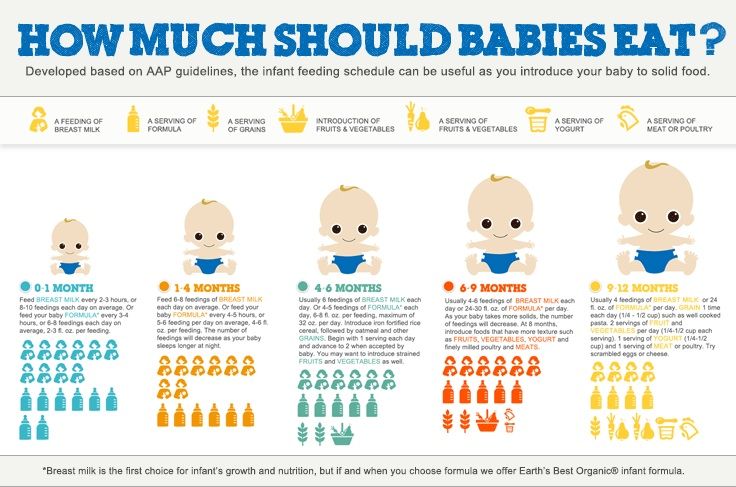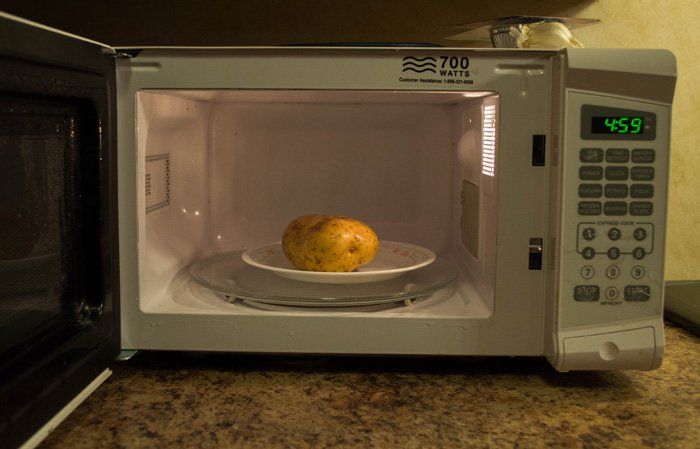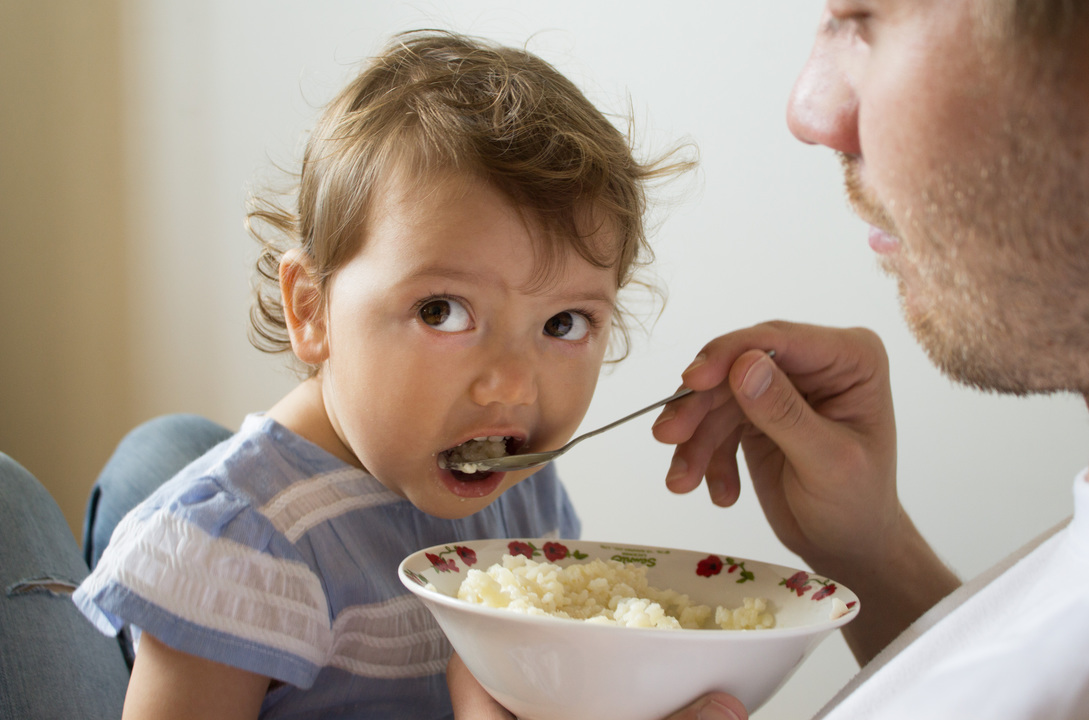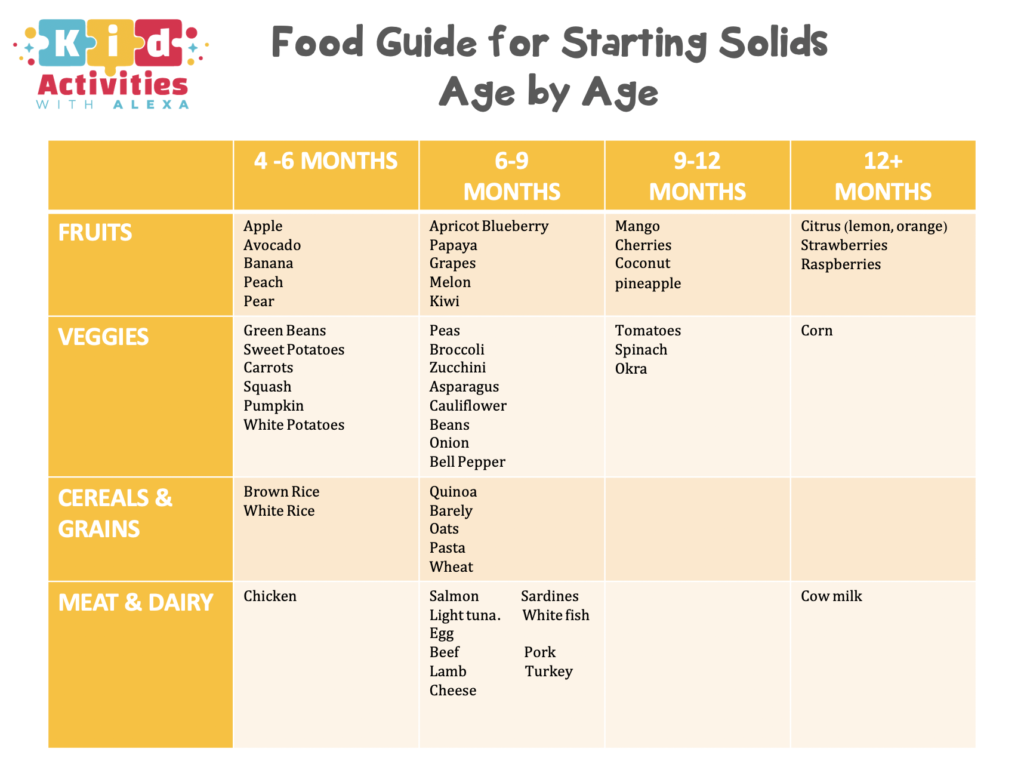What to feed baby after purees
Transitioning Your Baby to Finger Foods
Babies take in everything around them: seeing, hearing, touching, smelling and of course, tasting! As your little one develops, so do their feeding skills. Once they are eating Stage 2 purees with ease and show interest in feeding themselves, it may be time to introduce more filling foods for them to pick up and try themselves.
See our FAQs below to understand all your Stage 3 finger food questions: when, how and what to start introducing to your baby. It can be a messy process with little pieces of food thrown all over the floor, but trust us—it’s worth it to help your baby develop into a healthy little eater!
What are Finger Foods?Following Stage 2 combination purees, finger foods are the next stage in your baby’s eating adventures. Finger foods consist of bite-size pieces that are small enough to prevent choking, big enough to pick up with tiny fingers and soft enough to not require teeth. Other names for finger foods include Stage 3 foods or pick-up foods.
Finger foods mark the critical transition between purees and table food where your baby can start to develop self-feeding skills. Giving your baby bite-sized pieces allows them to practice their pincer grasp, which is the coordination between the index finger and thumb to hold an item. Developing their pincer grasp is an important milestone for babies, and giving them properly sized finger foods helps aid this process.
This is also an important time for your baby to gain exposure to new foods. As you introduce ingredients, you’re helping prepare them for more food and less breast milk or formula in the next couple of months.
When is Your Baby Ready for Finger Foods?It’s important to recognize when your baby is ready to explore finger foods, as this stage requires advanced motor skills and encourages food experimentation and independence.
Your baby may be ready for finger foods when…- They reach for food (most commonly a parent’s dish or serving utensil).

- They are hungry soon after meals. (Purees are less calorie-dense and filling, so they may not be getting enough to eat!)
- They are eating their purees quickly and continue wanting more.
- They are able (or almost able) to hold small pieces of food between their fingers.
If your baby is exhibiting a few or all of these signs, consider introducing finger foods! But if they aren’t ready, don’t fret. They’re still getting all of the nutrition they need from breast milk or formula up until age one when they transition to cow’s milk.
Every child develops at a different pace—just continue paying attention to your baby’s habits, and ease into finger foods when they’re ready.
What are the Best Finger Foods to Start Your Baby On?Once your baby is ready to make the transition, you’ll want to find the best finger foods for your baby to try. We recommend starting with small squares of soft, squishy foods. Before serving, test that the food can be easily pierced with a fork to ensure your baby won’t have trouble mashing it in their mouth. Think cubes of boiled sweet potatoes, carrots, soft proteins like meatballs or tofu, bananas, ripe avocados or well-cooked tiny pasta (like ditalini!).
Think cubes of boiled sweet potatoes, carrots, soft proteins like meatballs or tofu, bananas, ripe avocados or well-cooked tiny pasta (like ditalini!).
Once your baby has mastered mashing cubed pieces of these squishy foods in their mouths, try introducing smaller soft foods such as peas or well-cooked beans like black beans or white beans. These less “mushy,” foods will exercise your baby’s grasping and handling skills.
Can I Start Introducing Spices and Herbs to My Baby?Absolutely. In fact, we encourage it! Stage 3 is a period of palate development, and introducing spices and herbs allows them to get used to these flavors early on. Try starting with more mild flavors, like a bit of cinnamon or basil, and work your way up to more complex flavors like curry or paprika.
What Finger Foods Should You Avoid Feeding Your Baby?It is important to avoid foods that are too hard or large, making them difficult to swallow. In order to prevent choking, raw carrots, fresh bell peppers and other hard, raw veggies and tough meats should be avoided until chewing abilities are fully developed.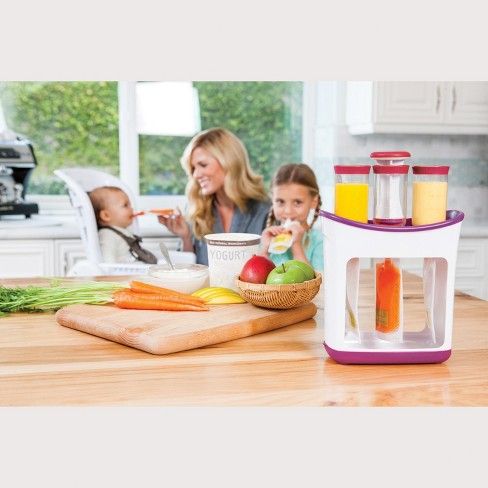
Also focus on not only the size, but also the shape of foods that you introduce. For example, grapes, cherry tomatoes and other rounded foods are dangerous choking hazards for children just learning to eat finger foods. Introduce these later (18–24 months) when your child has started developing more teeth, and even then, consider cutting circular foods into smaller pieces to create a more favorable shape for chewing.
Does Your Baby Need Teeth to Chew Finger Foods?No! Babies rarely “chew” with their front teeth—they use their palate and gums to mush foods during these early stages. Teeth will start to emerge, but they won’t be used for true chewing until their 2-year molars grow in.
Can You Start Your Baby on Finger Foods Before 10 Months?Babies develop at different stages, so there is no right or wrong when it comes to starting finger foods. If your baby shows signs of readiness, such as grabbing your food or getting hungry soon after finishing purees, consider giving finger foods a try, especially softer options such as ripe avocado or banana! Your baby may be gung-ho one day and disinterested the next. This is normal, so don’t be concerned if there is a range of motivation day-to-day.
This is normal, so don’t be concerned if there is a range of motivation day-to-day.
Yes! It’s perfectly normal to ease into the transition by alternating between purees and finger foods. This gives your baby the opportunity to start playing with the idea of self-feeding, even if they’re still having trouble with some of the execution. As you alternate, just continue offering different finger foods and giving your baby the option to pick up bites themselves.
Stage 3 finger foods are the next step in your growing baby’s developing diet. Try our suggestions to make a successful transition into this fun stage, and remember to enjoy the process with your little independent eater!
If you have any questions about finger foods for babies, we’re happy to help! Just reach out to us at [email protected].
How to Transition to Finger Foods When Your Baby is Stuck on Purees
Over the years, I’ve received a lot of questions from parents who are stressed out that, for whatever reason, their baby isn’t able to transition off purees. Maybe they’ve tried, and it ends up with their baby gagging excessively, maybe their baby vomits, maybe their baby just refuses the finger foods and they only want to eat the food that they’re familiar with – which are typically those easy-to-eat, easy-to-swallow purees! Don’t get me wrong, purees can be a great option when you’re starting solids with your baby, but they aren’t needed for long, especially once your baby has a safe swallow.
Maybe they’ve tried, and it ends up with their baby gagging excessively, maybe their baby vomits, maybe their baby just refuses the finger foods and they only want to eat the food that they’re familiar with – which are typically those easy-to-eat, easy-to-swallow purees! Don’t get me wrong, purees can be a great option when you’re starting solids with your baby, but they aren’t needed for long, especially once your baby has a safe swallow.
Basically, it can end up feeling like you’re stuck in this never ending rut of offering purees, trying to branch out to other textures and whole foods, only to be shut down. And the cycle repeats again and again – it’s not fun! If you know exactly what I’m talking about, this blog post is for you! It’s time to get to the bottom of why your baby may have difficulty transitioning to finger foods, or different textures, and what you can do to solve it!
This week on the podcast, I also delved into this topic because, trust me, my biggest mission is to give parents the confidence that they can move on from purees, so this cycle ends before it even begins!
Why it can be difficult transitioning onto finger foodsGradually advance the purees!What you want to do is gradually advance the textures that your baby is eating.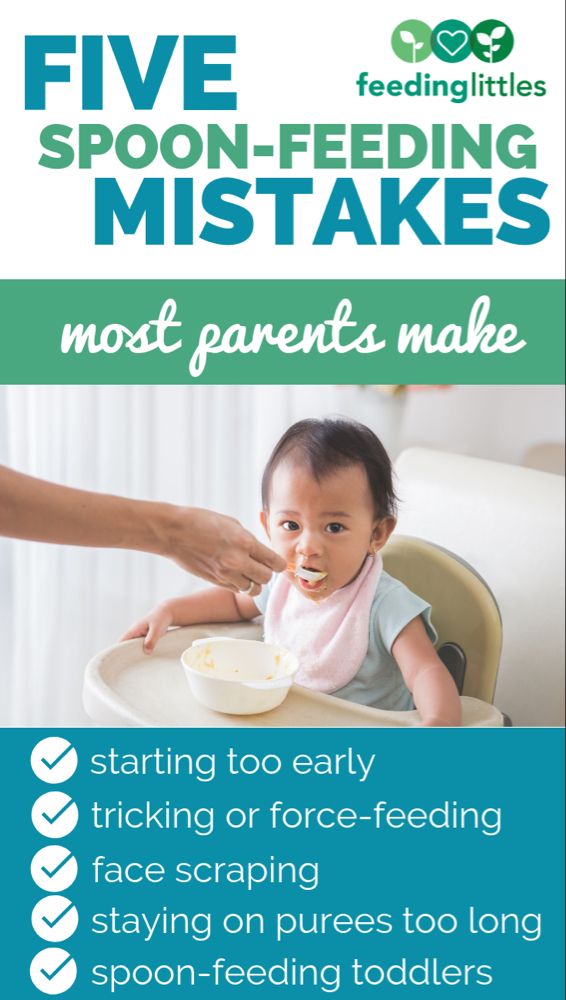 So, first start off by advancing the purees. If you were serving thin and smooth purees, graduate them to thicker and smooth, then thicker with small lumps (you can just smash most soft foods with the back of a fork to achieve this consistency), then thicker with larger lumps (mash the food just a little bit less or add minced pieces of food mixed in). Then you can just continue on until you’re serving purees that have a thicker and coarser Or, in other words, why your baby might get stuck on purees. There are 4 main reasons, so let’s get started!
So, first start off by advancing the purees. If you were serving thin and smooth purees, graduate them to thicker and smooth, then thicker with small lumps (you can just smash most soft foods with the back of a fork to achieve this consistency), then thicker with larger lumps (mash the food just a little bit less or add minced pieces of food mixed in). Then you can just continue on until you’re serving purees that have a thicker and coarser Or, in other words, why your baby might get stuck on purees. There are 4 main reasons, so let’s get started!
Purees have always been the “traditional” baby food when starting solids, and for babies who do start out on them, things should naturally and gradually progress from one stage to the next. With traditional feeding styles, babies are often on purees until about 9 or 10 months of age, with a very subtle introduction of finger foods (mainly puffs, soft fruit, and diced veggies).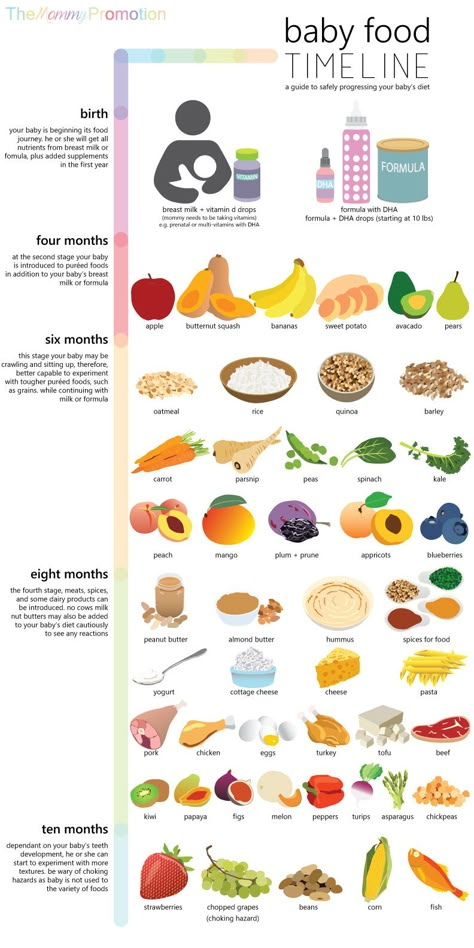 The introduction of table food (meaning the same food that the whole family is eating), happens for these babies around 11-12 months of age. This isn’t the same timeline for every baby though. Many start getting introduced to finger foods, and table foods, around 8, 9, or 10 months of age, which is perfectly appropriate, and should be something that healthy, term babies should be capable of doing.
The introduction of table food (meaning the same food that the whole family is eating), happens for these babies around 11-12 months of age. This isn’t the same timeline for every baby though. Many start getting introduced to finger foods, and table foods, around 8, 9, or 10 months of age, which is perfectly appropriate, and should be something that healthy, term babies should be capable of doing.
While for some babies this works fine, and they’re able to transition onto table foods without much of a problem. For many babies, what we’re seeing is that, when table food introduction doesn’t happen until closer to the one-year mark, there can be a lot of struggle and push back to transition.
AKA they’ve reached the point at which their baby is stuck on purees. And here’s why.
In general, these babies are being kept on purees for too long and the introduction of finger foods is happening way too late in the game.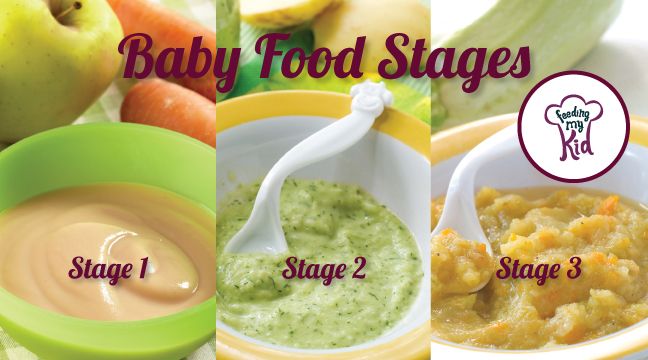 Did you know that, if purees are used, they’re only really needed for a short period of time before you can move onto finger foods? In fact, after you’ve established your baby can swallow them safely, I recommend a swift transition to finger foods! So, this can mean as little as a day or two on purees, or maybe a few weeks on purees. But really, that traditional timeline where babies were kept on purees for months at a time is so outdated, and is the cause for a lot of the problems that we see in feeding babies today.
Did you know that, if purees are used, they’re only really needed for a short period of time before you can move onto finger foods? In fact, after you’ve established your baby can swallow them safely, I recommend a swift transition to finger foods! So, this can mean as little as a day or two on purees, or maybe a few weeks on purees. But really, that traditional timeline where babies were kept on purees for months at a time is so outdated, and is the cause for a lot of the problems that we see in feeding babies today.
When puree feeding, and commercialized baby food became popular, there was a big push to keep babies on purees for as long as possible. So, not only did we see that babies were encouraged to start on purees earlier than required, but they were also encouraged to stay on purees for longer than needed! Babies on purees longer, equals more money in the pockets of those who manufacture baby food! This is totally unnecessary, can be harmful to your baby’s progress, and is really just a part of a big marketing scheme!
Fast forward to now, the new recommendation is to swiftly transition your baby onto finger foods, once you can see that your baby can safely and comfortably handle purees. Finger foods can be introduced way earlier in the game. You can start right at six months of age, or seven months of age, but I wouldn’t delay the introduction of finger foods much past that. Sometimes, babies don’t show interest in self-feeding until about 8 months of age. It’s not as common, but it is possible, especially if they’re not hitting those developmental milestones at the same time as the majority of babies – which is totally fine! Every baby grows at their own individual pace! In these cases, you can wait until then, and continue to feed purees to them in the meantime. But, as soon as you see your baby is willing, and able, to independently eat finger foods, you need to give them the opportunity to do so. There’s this small window of opportunity between 6 and 9 months of age, where babies should get to practice, and experience more textured foods and finger foods. This will help them gain that independence for self feeding, after which it becomes much harder for them to get that confidence, because they’ve gotten used to purees.
Finger foods can be introduced way earlier in the game. You can start right at six months of age, or seven months of age, but I wouldn’t delay the introduction of finger foods much past that. Sometimes, babies don’t show interest in self-feeding until about 8 months of age. It’s not as common, but it is possible, especially if they’re not hitting those developmental milestones at the same time as the majority of babies – which is totally fine! Every baby grows at their own individual pace! In these cases, you can wait until then, and continue to feed purees to them in the meantime. But, as soon as you see your baby is willing, and able, to independently eat finger foods, you need to give them the opportunity to do so. There’s this small window of opportunity between 6 and 9 months of age, where babies should get to practice, and experience more textured foods and finger foods. This will help them gain that independence for self feeding, after which it becomes much harder for them to get that confidence, because they’ve gotten used to purees.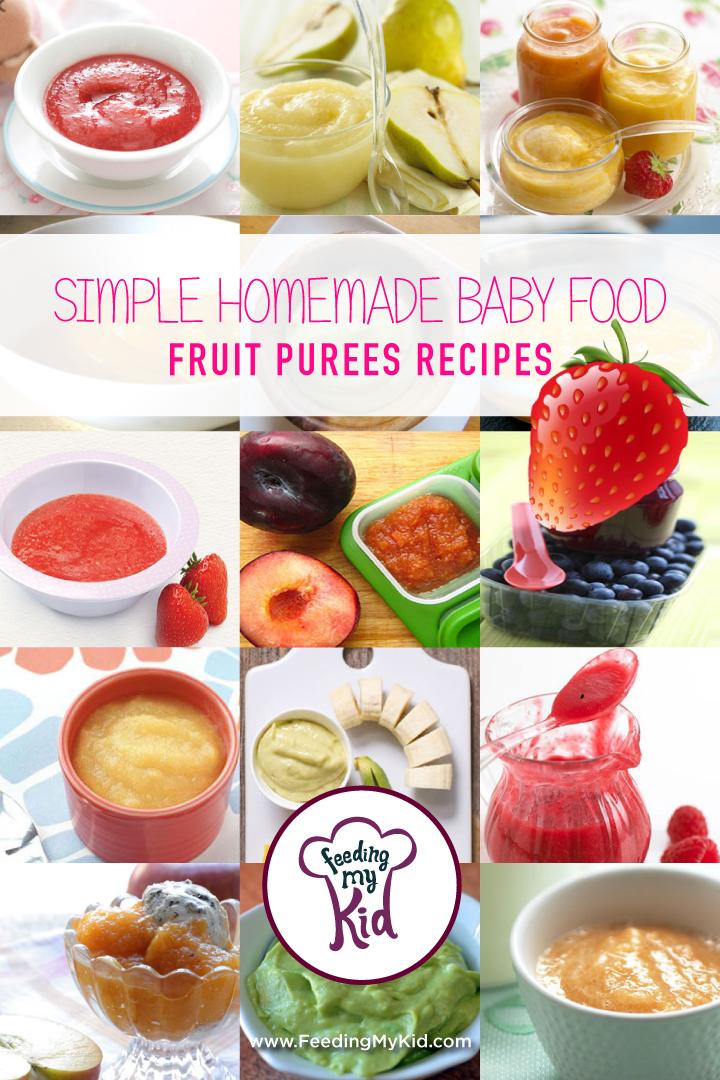 When this happens, purees become much more of a habit, and they end up not having the opportunity to exercise their oral muscles, and gain those oral motor skills, like munching, chewing, and moving food around in their mouth, at an optimal time. Updated Research very clearly shows that babies who haven’t been introduced to lumpy and textured foods by 9 months of age, may have an increased risk of developing feeding problems and picky eating later on.
When this happens, purees become much more of a habit, and they end up not having the opportunity to exercise their oral muscles, and gain those oral motor skills, like munching, chewing, and moving food around in their mouth, at an optimal time. Updated Research very clearly shows that babies who haven’t been introduced to lumpy and textured foods by 9 months of age, may have an increased risk of developing feeding problems and picky eating later on.
If you take away anything from this, it should be how important it is to introduce your baby to finger foods as early as they show they’re ready for it – typically within a month, or two months maximum, after starting purees. Or, it could be as early as their first day or two on purees. So once you see they’ve mastered it, there’s no need to keep them stuck there. Move them along!
Reason#2: infrequently serving finger foodsEven if your baby has been introduced to finger foods earlier, sometimes they get stuck on purees because they haven’t had enough experience with a variety of finger foods.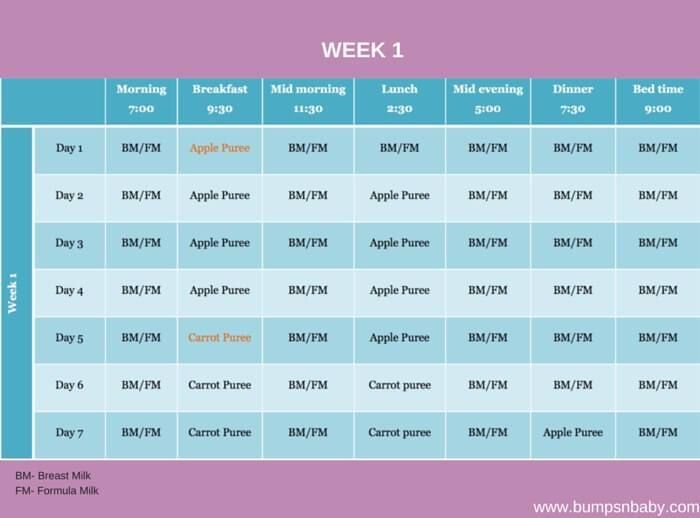 Maybe finger foods are offered once every couple of days, or just on the weekends, or whatever it may be. When they get limited experience with finger foods, or they’re not offered at every meal (or at the very least, 50-60% of the time), babies may not develop the skills they need to eat them, if the time to practice isn’t there.
Maybe finger foods are offered once every couple of days, or just on the weekends, or whatever it may be. When they get limited experience with finger foods, or they’re not offered at every meal (or at the very least, 50-60% of the time), babies may not develop the skills they need to eat them, if the time to practice isn’t there.
Most of the time what I see happening is, babies have just developed an expectation that they’ll be offered purees if a finger food is initially refused. Sometimes they’ll spit out the finger food, or even a chunkier puree that they’re not used to. Or, they might flat out refuse it, ignore it, or cry and fuss at the sight of it, only stopping when the old faithful puree is brought out. I also hear this happen with babies who prefer puffs, rice rusks, or other soft, very easy to eat food. It’s beyond frustrating for those parents, so they resort to offering purees as a backup once any of these scenarios happen.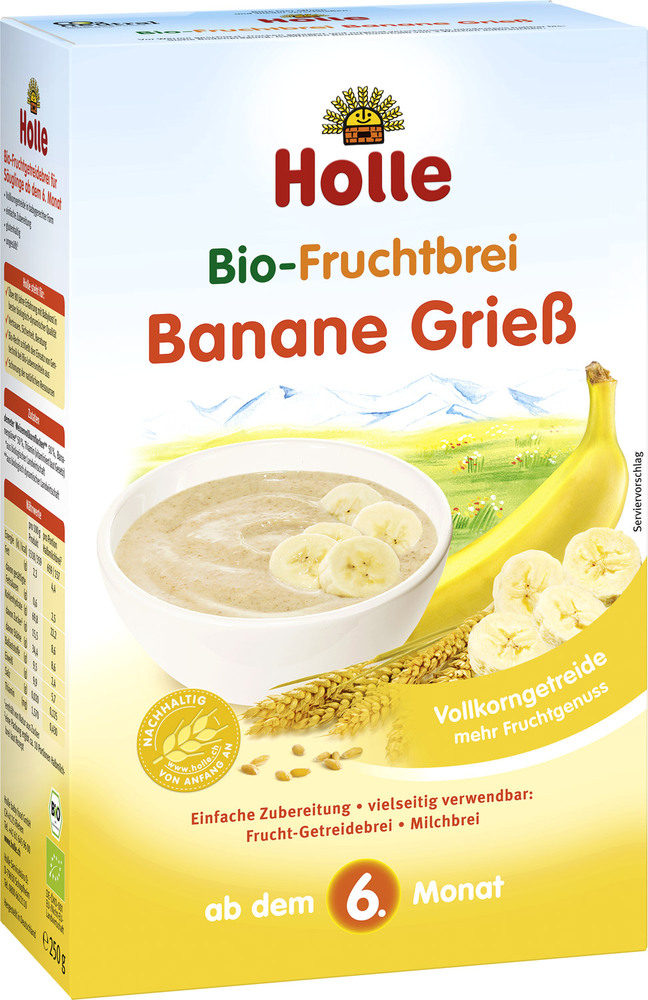 Unfortunately, this can keep them stuck in that same cycle I mentioned earlier, with no end in sight!
Unfortunately, this can keep them stuck in that same cycle I mentioned earlier, with no end in sight!
Another reason that babies might have a hard time transitioning onto finger foods, is because when they’ve been offered finger foods, they’re typically ultra soft, or really easily melt in their mouth – think things like puffs and rice rusks, again. Other times, parents will start their babies off on bananas, avocados, or sweet potatoes, and then assume that they’ve done what is needed to “introduce finger foods early”. The thing is, our babies need the experience with a variety of textures, not just ultra soft or meltable textures. And this is because it will allow them to continually advance by challenging them with more difficult to chew foods, so that they continue to develop their eating skills, and don’t give up once something doesn’t easily dissolve, or mash, in their mouth.
What you want to do is gradually advance the textures that your baby is eating. So, first start off by advancing the purees. If you were serving thin and smooth purees, graduate them to thicker and smooth, then thicker with small lumps (you can just smash most soft foods with the back of a fork to achieve this consistency), then thicker with larger lumps (mash the food just a little bit less or add minced pieces of food mixed in). Then you can just continue on until you’re serving purees that have a thicker and coarser texture. Watch for the gagging, see how they react and recover, build your confidence, and theirs, and keep moving forward!
Offer finger foods alongside pureesI also recommend serving finger foods alongside the purees at mealtimes, and as a stand alone snack, especially if they’re under one year of age and are still getting breast milk or formula to supply them with the calories they need. Start with rice rusks, or finger shaped puffs (like Baby Gourmet carrot sticks or Puffworks), but remember – don’t get stuck there! Use these to get them interested in self-feeding. Once they start bringing ultra soft and dissolvable foods like these to their mouths with precision, and start making an up-and-down chewing motion, you can move them onto something like a soft pancake, or toast moistened with a topping. Then continue to progress them from there!
Start with rice rusks, or finger shaped puffs (like Baby Gourmet carrot sticks or Puffworks), but remember – don’t get stuck there! Use these to get them interested in self-feeding. Once they start bringing ultra soft and dissolvable foods like these to their mouths with precision, and start making an up-and-down chewing motion, you can move them onto something like a soft pancake, or toast moistened with a topping. Then continue to progress them from there!
I’ve developed something called the Texture Timeline™ that is exclusive to My Little Eater™, and that’s found inside of my Baby Led Feeding online course, that walks you through each of the stages and textures, in order of difficulty, and includes suggested timelines to spend on each texture. This makes it easy for parents that aren’t sure how to, or are afraid to, progress in textures, or don’t know what readiness signs to look for that indicate that their baby is ready to move on. I give you tons of ideas for different foods that fit within each phase of the Texture Timeline™, so that you don’t have to guess what to offer, and when. This way, you can make sure that your baby has hit every major texture out there, and gets the experience that they need, in a timely manner!
This way, you can make sure that your baby has hit every major texture out there, and gets the experience that they need, in a timely manner!
Now, sometimes the gradual approach of offering finger foods alongside of purees will work, but sometimes going cold turkey with the purees is required so that your baby learns that purees won’t be offered anymore, that you’ve moved on, and that they’re going to have to start to work a little bit harder to chew the finger foods you offer (and accept them eventually). The first couple of days may be rough, because your baby could end up refusing foods in general, making you worry that they won’t be getting all the calories they need. The thing to remember is that breastmilk, or formula, is still there to provide them with the calories that they may be missing from solid foods. Hopefully, this will help you stress less as they fight the transition over the next few days (maybe even a week).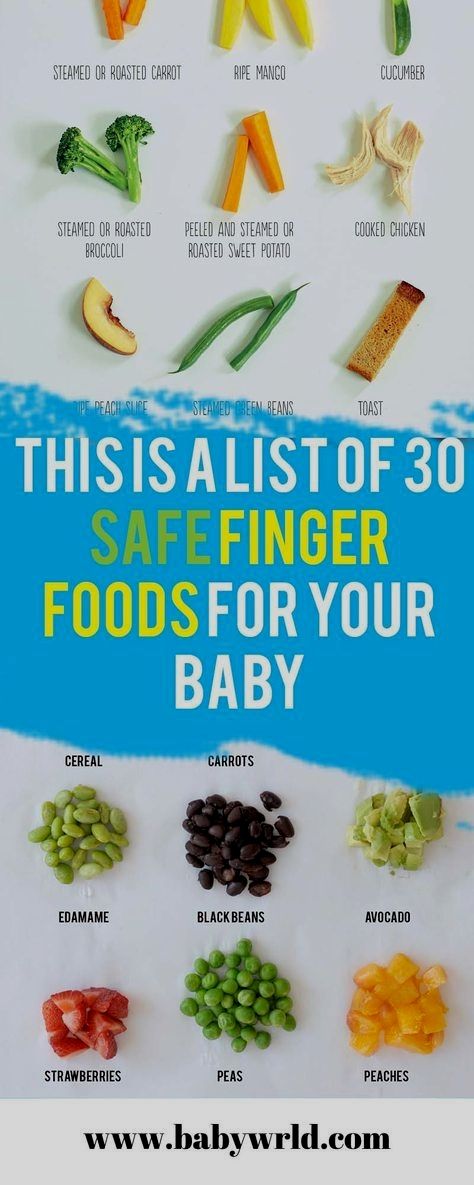 Offer them breastmilk, or formula, about half an hour to 45 minutes after the meal has ended. This way, you know that they won’t end up super hungry, and they’re still getting the nutrition they need to grow, but you’ve also got out of the habit of offering purees as a backup. And, alas, you can finally start to get out of this cycle, moving forward once and for all!
Offer them breastmilk, or formula, about half an hour to 45 minutes after the meal has ended. This way, you know that they won’t end up super hungry, and they’re still getting the nutrition they need to grow, but you’ve also got out of the habit of offering purees as a backup. And, alas, you can finally start to get out of this cycle, moving forward once and for all!
One thing I want to make sure you understand, is that you can definitely expect your baby to gag more once they’re offered more advanced textures. Gagging is totally normal, is expected, and is a natural response to something new or different being in their mouth. Their gag reflex is a protective mechanism that is there as a helping hand as they learn their new skills! It doesn’t mean your baby is choking. It doesn’t mean that they’re in danger. It just means that they’re going to take some time to figure out what to do with that food, with those lumps, and with those new textures that they’re experiencing.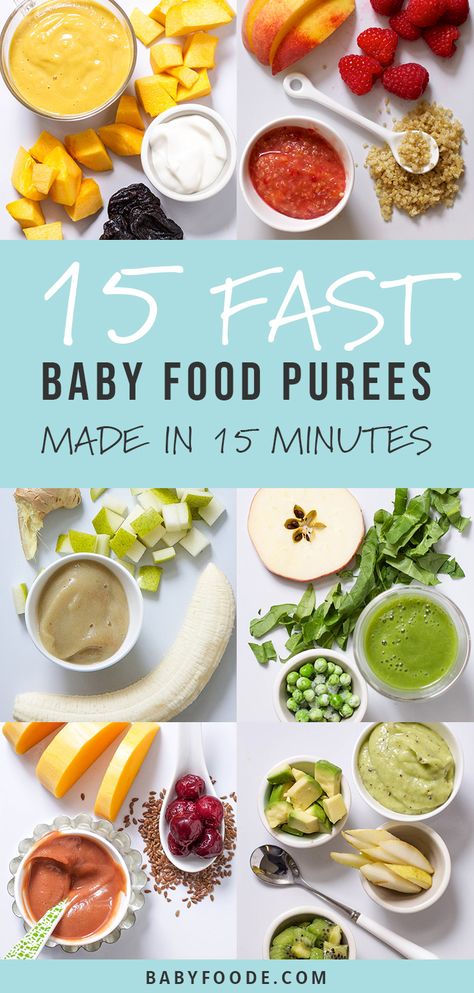
As they start to get more practice with finger foods, they’ll start to figure out how to manipulate those new foods in their mouth, how to chew them, and how to bring them to the back of their tongue for swallowing. That’s when you’ll start to see that the gagging finally starts to decrease. It’s just one of those things that you can’t avoid and that you need to let happen, in order to move forward!
When it does start to happen, just be there for them. Coach them through the gag, tell them: “You can do it! You’re doing a great job!”, and generally try to keep the atmosphere positive and light-hearted. Don’t let your baby feel like there’s something wrong when they start to gag, or like there’s a need to panic, because then they may start to turn away from those foods all together.
It’s worth mentioning here, that if your baby gags and then continues to go on with the meal, maybe goes for another piece of food, maybe just wants to pause, but is still smiling and generally content, then everything is good, and you can keep challenging them with those textures! However, in some cases, especially kids who have feeding difficulties and more severe challenges, they may actually vomit excessively, or gag excessively.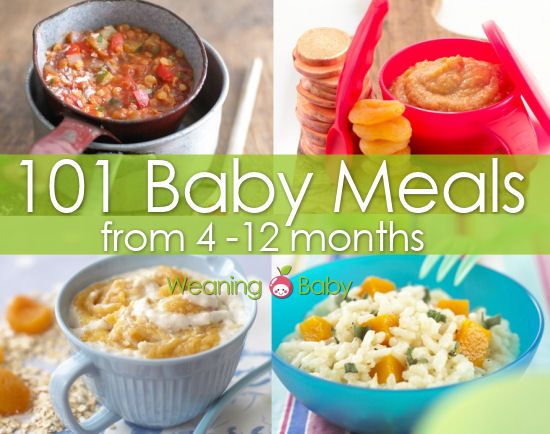 By this, I mean it is happening to the point that mealtimes can’t be continued, and become dreaded. In these instances, you should definitely talk to your doctor, and ask for a referral for a feeding evaluation, just to rule out any further feeding, or medical problems.
By this, I mean it is happening to the point that mealtimes can’t be continued, and become dreaded. In these instances, you should definitely talk to your doctor, and ask for a referral for a feeding evaluation, just to rule out any further feeding, or medical problems.
So there you have it! A general plan for how to get your baby off of purees, progressing onto finger foods, and eating the same meals as the entire family.
If you need help figuring out how to serve different finger foods in order to progress your baby on in textures, what gagging and choking looks like, how to set your baby up for positive mealtimes, how to raise them to be adventurous eaters (and so much more), definitely check out my Baby Led Feeding online course! There’s so much to learn, and I hold your hand every step of the way. Join thousands of parents who’ve already made the leap to feed in a completely baby led way! All these helpful tips are also up on the podcast this week, so check that out if you prefer to listen to me chat about the details.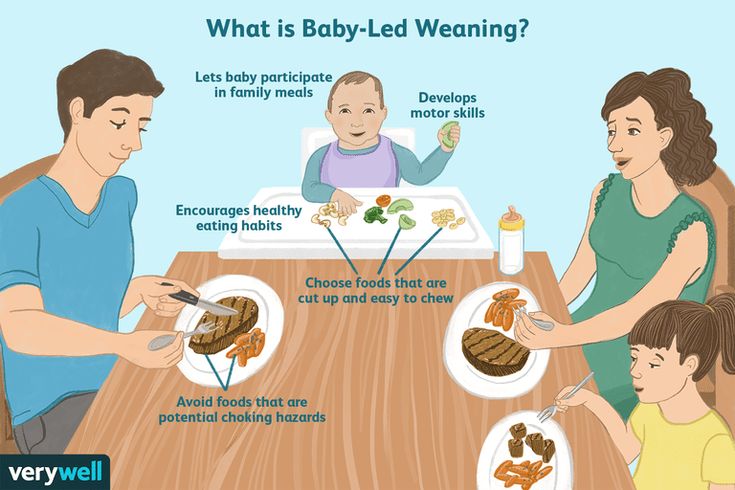
Diet for a 4-6 month old baby
Your baby is already 4 months old. He has noticeably grown up, become more active, is interested in objects that fall into his field of vision, carefully examines and reaches for them. The emotional reactions of the child have become much richer: he joyfully smiles at all the people whom he often sees more and more often, makes various sounds.
You are still breastfeeding your baby or have had to switch to mixed or formula feeding. The child is actively growing, and only with breast milk or infant formula, he can no longer always get all the necessary nutrients. And that means it's time to think about complementary foods.
The optimal time to start its introduction is between 4 and 6 months, regardless of whether the baby is receiving breast milk or formula. This is the time when children respond best to new foods. Up to 4 months, the child is not yet ready to perceive and digest any other food. And with the late introduction of complementary foods - after 6 months, children already have significant deficiencies of individual nutrients and, first of all, micronutrients (minerals, vitamins, long-chain polyunsaturated fatty acids, etc. ). In addition, toddlers at this age often refuse new foods, they have delayed development of chewing skills for thick foods, and inadequate eating habits are formed. It is important to know that, no matter how strange it may seem at first glance, with a delayed appointment of complementary foods, allergic reactions more often occur on them.
). In addition, toddlers at this age often refuse new foods, they have delayed development of chewing skills for thick foods, and inadequate eating habits are formed. It is important to know that, no matter how strange it may seem at first glance, with a delayed appointment of complementary foods, allergic reactions more often occur on them.
When is it advisable to introduce complementary foods as early as 4 months, and when can you wait until 5.5 or even 6 months? To resolve this issue, be sure to consult a pediatrician.
As a rule, at an earlier age (4 - 4.5 months), complementary foods are introduced to children at risk of developing iron deficiency anemia, as well as children with insufficient weight gain and with functional digestive disorders.
The optimal time to start complementary foods for a healthy baby is between 5 and 5.5 months of age.
The World Health Organization recommends that breastfed babies should be introduced to complementary foods from 6 months of age. From the point of view of domestic pediatricians, which is based on extensive practical experience and scientific research, this is possible only in cases where the child was born on time, without malnutrition (since in these cases the mineral reserves are very small), he is healthy, grows well and develops. In addition, the mother should also be healthy, eat well and use either specialized enriched foods for pregnant and lactating women, or vitamin and mineral complexes in courses. Such restrictions are associated with the depletion of iron stores even in a completely healthy child by 5-5.5 months of age and a significant increase in the risk of anemia in the absence of complementary foods rich or fortified with iron. There are other deficits as well.
From the point of view of domestic pediatricians, which is based on extensive practical experience and scientific research, this is possible only in cases where the child was born on time, without malnutrition (since in these cases the mineral reserves are very small), he is healthy, grows well and develops. In addition, the mother should also be healthy, eat well and use either specialized enriched foods for pregnant and lactating women, or vitamin and mineral complexes in courses. Such restrictions are associated with the depletion of iron stores even in a completely healthy child by 5-5.5 months of age and a significant increase in the risk of anemia in the absence of complementary foods rich or fortified with iron. There are other deficits as well.
The first complementary food can be vegetable puree or porridge, fruit puree is better to give the baby later - after tasty sweet fruits, children usually eat vegetable puree and cereals worse, often refuse them altogether.
Where is the best place to start? In cases where the child has a tendency to constipation or he puts on weight too quickly, preference should be given to vegetables.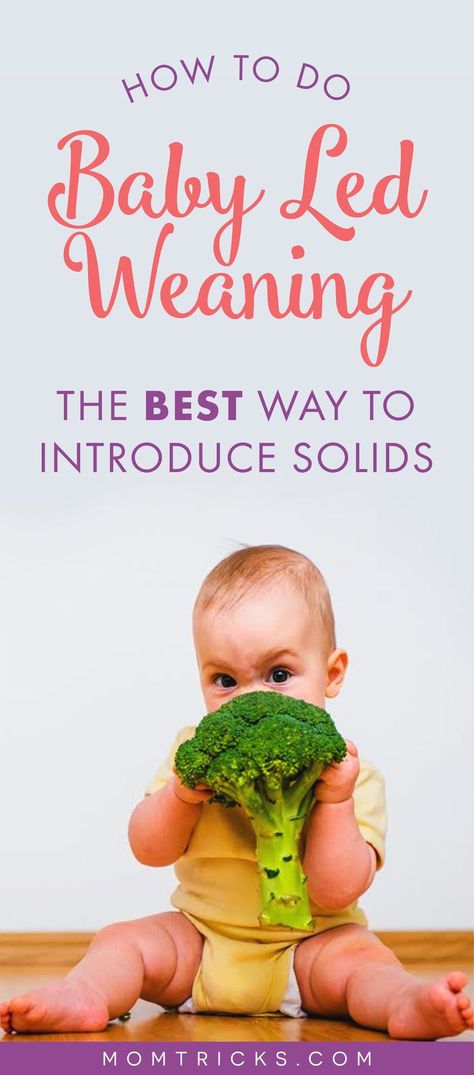 With a high probability of developing anemia, unstable stools and small weight gains - from baby cereals enriched with micronutrients. And if you started introducing complementary foods with cereals, then the second product will be vegetables and vice versa.
With a high probability of developing anemia, unstable stools and small weight gains - from baby cereals enriched with micronutrients. And if you started introducing complementary foods with cereals, then the second product will be vegetables and vice versa.
If the first complementary food is introduced at 6 months, it must be baby porridge enriched with iron and other minerals and vitamins, the intake of which with breast milk is no longer enough.
Another important complementary food product is mashed meat. It contains iron, which is easily absorbed. And adding meat to vegetables improves the absorption of iron from them. It is advisable to introduce meat puree to a child at the age of 6 months. Only the daily use of children's enriched porridge and meat puree can satisfy the needs of babies in iron, zinc and other micronutrients.
But it is better to introduce juices later, when the child already receives the main complementary foods - vegetables, cereals, meat and fruits.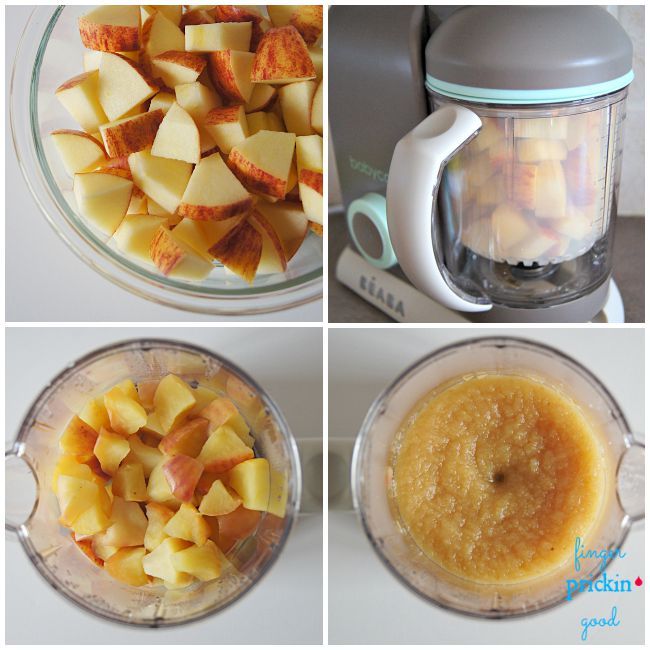 After all, complementary foods are needed so that the baby receives all the substances necessary for growth and development, and there are very few in their juices, including vitamins and minerals.
After all, complementary foods are needed so that the baby receives all the substances necessary for growth and development, and there are very few in their juices, including vitamins and minerals.
Juices should not be given between feedings, but after the child has eaten porridge or vegetables with meat puree, as well as for an afternoon snack. The habit of drinking juice between meals leads to frequent snacking in the future, a love of sweets is instilled, children have more tooth decay and an increased risk of obesity.
With the start of the introduction of complementary foods, the child is gradually transferred to a 5-time feeding regimen.
Rules for the introduction of complementary foods:
- preference should be given to baby products of industrial production, they are made from environmentally friendly raw materials, have a guaranteed composition and degree of grinding
- Complementary foods should be offered to the baby by spoon at the start of feeding, before breastfeeding (formula feeding)
- the volume of the product increases gradually, starting with ½ - 1 spoon, and in 7 - 10 days we bring it to the age norm, subsequent products within the same group (cereals from other cereals or new vegetables)
- can be entered faster, in 5 - 7 days
- start introduction with monocomponent products
- it is undesirable to give a new product in the afternoon, it is important to follow how the child reacts to it
- do not introduce new products in the event of acute illnesses, as well as before and immediately after prophylactic vaccination (should be abstained for several days)
When introducing a new type of complementary food, first try one product, gradually increasing its amount, and then gradually “dilute” this product with a new one. For example, vegetable complementary foods can be started with a teaspoon of zucchini puree. During the week, give the baby only this product, gradually increasing its volume. After a week, add a teaspoon of mashed broccoli or cauliflower to the zucchini puree and continue to increase the total volume every day. Vegetable puree from three types of vegetables will be optimal. The portion should correspond to the age norm. Over time, you can replace the introduced vegetables with others faster.
For example, vegetable complementary foods can be started with a teaspoon of zucchini puree. During the week, give the baby only this product, gradually increasing its volume. After a week, add a teaspoon of mashed broccoli or cauliflower to the zucchini puree and continue to increase the total volume every day. Vegetable puree from three types of vegetables will be optimal. The portion should correspond to the age norm. Over time, you can replace the introduced vegetables with others faster.
After the introduction of one vegetable (bringing its volume to the required amount), you can proceed to the intake of porridge, and diversify the vegetable diet later.
If the child did not like the dish, for example, broccoli, do not give up and continue to offer this vegetable in a small amount - 1-2 spoons daily, you can not even once, but 2-3 times before meals, and after 7 - 10, and sometimes 15 days, the baby will get used to the new taste. This diversifies the diet, will help to form the right taste habits in the baby.
Spoon-feeding should be done with patience and care. Forced feeding is unacceptable!
In the diet of healthy children, porridge is usually introduced after vegetables (with the exception of healthy breastfed children, when complementary foods are introduced from 6 months). It is better to start with dairy-free gluten-free cereals - buckwheat, corn, rice. At the same time, it is important to use porridge for baby food of industrial production, which contains a complex of vitamins and minerals. In addition, it is already ready for use, you just need to dilute it with breast milk or the mixture that the baby receives.
Children suffering from food allergies are introduced complementary foods at 5-5.5 months. The rules for the introduction of products are the same as for healthy children, in all cases it is introduced slowly and begins with hypoallergenic products. Be sure to take into account individual tolerance. The difference is only in the correction of the diet, taking into account the identified allergens. From meat products, preference should first be given to mashed turkey and rabbit.
From meat products, preference should first be given to mashed turkey and rabbit.
Diets for different age periods
Explain how you can make a diet, it is better to use a few examples that will help you navigate in compiling a menu specifically for your child.
From 5 months, the volume of one feeding is on average 200 ml.
Option 1.
If your baby started receiving complementary foods from 4-5 months, then at 6 months his diet should look like this:
| I feeding 6 hours | Breast milk or VHI* | 200 ml |
| II feeding 10 hours | Dairy-free porridge** Supplementation with breast milk or VHI* | 150 g 50 ml |
| III feeding 14 hours | Vegetable puree Meat puree Vegetable oil Supplemental breast milk or VHI* | 150 g 5 - 30 g 1 tsp 30 ml |
| IV feeding 18 hours | Fruit puree Breast milk or VHI* | 60 g 140 ml |
| V feeding 22 hours | Breast milk or VHI* | 200 ml |
* - infant formula
** - diluted with breast milk or VHI
Option 2.
* - infant formula Option 3. : ** - diluted with breast milk Up to 7 months, increase the volume of porridge and vegetable puree to 150 g and introduce fruit puree. The materials were prepared by the staff of the Healthy and Sick Child Nutrition Laboratory of the National Research Center for Children's Health of the Ministry of Health of Russia and are based on the recommendations given in the National Program for Optimizing the Feeding of Children in the First Year of Life in the Russian Federation, approved at the XV Congress of Pediatricians of Russia (02.2009d.) Modern principles of complementary feeding of children is a kind of fusion of practical experience and the latest scientific developments. They are based on the recommendations of the European Association of Pediatric Gastroenterologists, Hepatologists, Nutritionists ESPGHAN , the American Academy of Pediatrics AAP and national recommendations of relevant ministries and associations. Complementary foods: online course Modern recommendations are based on the analysis of the results of many studies on the composition, timing of the introduction of complementary foods in Europe for healthy full-term newborns, taking into account various aspects of the introduction of complementary foods, its impact on indicators of physical and mental development. Timely introduction of complementary foods contributes to the optimal development of all systems and organs of the child, physical parameters, psychomotor development, and the activity of the nervous system. The period of introduction of complementary foods is very important for the growth and development of the child, as well as an outstanding stage in the transition of the child from breastfeeding to feeding from the general table. The General Rules for the introduction of complementary foods for children of the first year of life were developed: The first complementary foods at 4 months The age of 4 months as the minimum for the introduction of complementary foods was also chosen because at 4 months the child's gastrointestinal tract becomes more mature: the initially increased permeability of the small intestine mucosa decreases, a series of digestive enzymes, a sufficient level of local immunity is formed, the child acquires the ability to swallow semi-liquid and thicker food, associated with the extinction of the “spoon ejection reflex”. Therefore, to the question of whether it is necessary to give complementary foods to a 3-month-old baby , we can unequivocally answer: no, it's too early! But 4 months, this is the time when you can think about the introduction of complementary foods. At the same time, it should be remembered that at the age of 4 months, the child has enough mother's milk or a highly adapted milk formula for its full development. In addition, when they talk about complementary foods at 4 months, they usually mean the end of the 4th month of life. It is important to continue breastfeeding in parallel with the introduction of complementary foods. Video: complementary foods at 4 months If you enter complementary foods at the 4th month of the child’s life -this is usually a one-component Puree , if the child does not suffer well enough well , then it can be gluten-free porridges: rice and buckwheat . What is useful in vegetable supplements and what is the best way to prepare it? Vegetable puree - for the first feeding can be prepared from cauliflower, zucchini, pumpkin, broccoli - these are low-allergenic products, are among the ten most useful vegetables in the diet of children, contain a large amount of healthy proteins, fiber and vitamins, microelements ! Fiber helps move food through the digestive tract and promote beneficial microflora in the gut. Pectins absorb and remove toxins from the baby's body. Vegetables have a positive effect on the acid-base balance of the body, creating conditions for the proper functioning of all organs and systems. Cauliflower - is a good source of fiber, protein, minerals and vitamins: A, B1, B2, B3 (PP), B6, as well as a small amount of vitamins K, D and tocopherol (vitamin E). Zucchini - rich in vitamins and microelements. It contains potassium, magnesium, phosphorus, calcium, vitamins C, B1 and B2 and others, folic acid. Which plays an important role in the processes of hematopoiesis. Zucchini is rich in such important trace elements as iron and copper. They are necessary for the formation of nervous tissue, normalization of metabolism, as well as for the formation of hemoglobin, which is a good prevention of anemia. Broccoli is a very useful vegetable, which is a kind of cauliflower. Broccoli is the leader in choline and methionine content. Only 50 g of broccoli provides the baby with a full set of nutrients for a day. Pumpkin is the largest vegetable on Earth. It is one of the ten most useful vegetables in the diet of children, contains a large amount of useful proteins, fiber and vitamins, including beta-carotene, vitamin C, E, K, iron, potassium, magnesium, trace elements that are indispensable for children's nutrition, as they strengthen immunity and help fight inflammation, have a beneficial effect on the nervous system. Vitamins and microelements contained in pumpkin help the child grow, provide healthy sleep, are responsible for the condition of the skin and eyes, improve metabolic processes, and accelerate the removal of harmful substances from the child's body. Due to its beneficial qualities, pumpkin can be one of the first types of complementary foods for an infant. All vegetable purees have a specific vegetable smell, this is absolutely normal 0274 Introduction of vegetable puree Vegetables should be introduced into the child's menu gradually. Start giving each new vegetable in the form of a monocomponent puree in the amount of ½ teaspoon, preferably at breakfast, so you can track the manifestations of food allergies or intolerance reactions to this product. If all is well, then the next day, offer him a teaspoon. So gradually you need to bring the portion to 50-100 grams. If the child does not like the dish, for example, broccoli, do not give up and continue to offer this vegetable in small quantities - 1-2 spoons a day, maybe not even once, but 2-3 times before meals, and after 7 - 10, and sometimes 15 days, the baby will get used to the new taste. This diversifies the diet, will help form the right taste habits in the child. Fruit puree introduction Fruit puree is a definite alternative and addition to vegetables. It can be made from apples, bananas - by the way, do you know what a berry is?, sweet varieties of pears. These fruits contain substances useful for babies, vitamins and minerals, including iron, which is extremely necessary for children. Porridges in the nutrition of a child in the first year of life. Porridge can be introduced into the baby's diet at the end of 4 months or at the fifth, sixth month of life. As a rule, they go as a second food after vegetable or fruit puree. But if your child is not gaining weight very well, or you have been feeding your child with breast milk or infant formula until almost the end of 6 months, then complementary foods can be started with the introduction of cereals. It is important to start with one-component, low-allergenic cereals which does not contain gluten : this is buckwheat, rice, corn porridge . gluten-containing cereals include: wheat, oats, rye, barley, millet . According to modern data the period of introduction of gluten into the child's diet is not of fundamental importance, but the latest recommendations draw attention to the fact that its amount in the baby's diet should not be large. Therefore, it is better to add semolina and oatmeal to other porridge in a limited amount, and not to give it on its own. No relationship was found between the timing of the start of complementary foods that contain gluten and the development of celiac disease in a child. If your child hasn't tried porridge yet, start with a dairy-free, gluten-free, one-ingredient buckwheat or rice porridge. Rice - very useful for growing baby. It has a low content of vegetable proteins, therefore it is easily digested and is especially useful for toddlers with unstable stools. Rice has a high nutritional value and, to a certain extent, protects the delicate intestines of the baby due to its enveloping effect. Gluten-free buckwheat porridge - very nutritious and rich in iron, fiber, rich in various vitamins and microelements. This is also a good option for starting a child's acquaintance with adult food. These porridges can be prepared with water, breast milk, milk formula, which your child is used to. No need to add salt and sugar. Rules for introducing porridge into baby food If the child already eats porridge from 5 months, then at 6 months you can offer a more complex porridge - for example, rice porridge with apricot or raspberries, rice porridge with banana (this is very successful a combination both in taste and in its properties) or even more complex porridge - corn-rice with banana. Over time, you can start adding apple, banana, pear, plum and prunes, apricot and dried apricots, broccoli, carrots, berries, to the porridge, provided that the child is not allergic to them. The rules for introducing cereals are the same as for vegetable puree. In order for the child to get used to the new product and its consistency more easily, first prepare 5% porridge (5 g of cereal per 100 g of water), if you make it yourself. Porridge is usually cooked with water, but can be made with breast milk, infant formula. First, give the baby one teaspoon, then, within 7-10 days, bring the volume of porridge of the same percentage to the full volume of feeding (150 g). If all this time the porridge is well tolerated, i.e. there are no skin rashes, the child has stable stools, they switch to a gradual (starting from 20-30 g) introduction of porridge of the same cereal, but already at a 10% concentration (10 g of cereal per 100 g of water). Video: feeding porridge You need to give porridge with a spoon, it is better in the morning for breakfast. After porridge at the stage of its introduction, the child should be offered breast or milk formula. With artificial feeding, the volume of the mixture after a portion of porridge should be such that, together with porridge, it is 200 ml with five meals a day. Norms for the introduction of cereals In the future, the volume of the portion of porridge gradually increases, amounting to: Cereal schedule Meat complementary foods - the rules for introducing meat into the child's diet Meat is usually the third, very important product of complementary foods, after vegetables and cereals. The meat contains amino acids, complete animal protein, B vitamins (B1, B2, B6 and B12), heme iron, potassium, calcium, zinc, phosphorus, which are necessary for the growth and development of the child. It is very important to understand that mashed meat contains iron, which is easily absorbed. And the addition of meat to vegetables improves the absorption of iron from them, from vegetables. Iron deficiency can seriously affect the intellectual development of a child, his immunity, hematopoiesis. Heme iron - found in meat products and easily digestible (red meat-veal, liver), absorption is about 25%. Non-heme iron - found in plant foods (beans, beans, lentils, peas, nuts, tomatoes, cauliflower, green leafy vegetables, apples, dried fruits, but it is absorbed much worse from plants - only 3-5% Iron absorption from other animal products (eggs, fish) is 10-15%.0003 It is important to know that human milk enhances , while cow's milk reduces iron absorption . Timing of the introduction of meat complementary foods Meat puree is advisable to introduce to a child aged 6-8 months . This, to some extent, depends on when cereals and vegetable/fruit purees were introduced. Children at risk of anemia are advised to introduce meat earlier at 5-6 months of age. It has been proven that only the daily use of children's enriched porridge and meat puree can fully meet the needs of children in iron, zinc and other micronutrients. You can start meat complementary foods with lean beef, veal , but better with less allergenic poultry meat ( turkey, chicken ), or rabbit, these are the most easily digestible meats. Goose and pork are fatty for a baby, and the meat of duck and other birds of the reservoirs is also not suitable for the first feeding. Horsemeat is perfect for your baby. The product is rich in carbohydrates and proteins, but it is almost impossible to find horse meat for sale. Meat should be introduced into the child's diet gradually, at lunchtime, at first, a quarter of a teaspoon and, gradually adding, bring it to the daily norm: At 8 months, about 50 g, at 9months-60-70 g. Video: Lift meat Scheme of meat puree At first, it is better to give meat with vegetable puree, which the child has already eaten, so he will better adapt to the new product, and iron is better absorbed. Children at the end of the first year of life can already be given 3 varieties of mashed meat. Baby menu at 7-8 months At 7-8 months you can start giving children baby cottage cheese 9062 9027 Start with 1/2 teaspoon. Within a month, the daily volume of cottage cheese consumption by a baby can be increased to 30-40 g. In addition, a child of 8 months is recommended to give sour-milk infant formula. But ordinary yogurt from the store should not be given. At this age, the child should receive 5 g of butter and 5 g (1 teaspoon) of vegetable oil, ¼- yolk - 2-3 times a week. Baby's menu at 9 months old At the age of 9 months old Your baby is already familiar at this age already usually familiar with: , egg yolk I feeding
6 hours Breast milk or VHI* 200 ml II feeding
10 hours Dairy-free porridge**
Fruit puree 150 g
20 g III feeding
14 hours Vegetable puree
Meat puree Vegetable oil
Fruit juice 150 g
5 - 30 g
1 tsp
60 ml IV feeding
18 hours Fruit puree
Breast milk or VHI* 40 g
140 ml V feeding
22 hours Breast milk or VHI* 200 ml
** - diluted with breast milk or VMS 
I feeding
6 hours Breast milk II feeding
10 hours Dairy-free porridge**
Breast milk supplement 100 g III feeding
14 hours Vegetable puree
Meat puree Vegetable oil
Breast milk supplement 100 g
5 - 30 g
1 tsp IV feeding
18 hours Breast milk V feeding
22 hours Breast milk 
Rules for the introduction of complementary foods for a child 4-12 months old: the first complementary foods, menus, charts, tables, principles of nutrition for a baby

 Therefore, at this age, it is important to give food of the right consistency and in the right way
Therefore, at this age, it is important to give food of the right consistency and in the right way  But we can shape and adjust the taste preferences of the child through training, systematically offering the child foods with different tastes, including sour, bitter green vegetables
But we can shape and adjust the taste preferences of the child through training, systematically offering the child foods with different tastes, including sour, bitter green vegetables 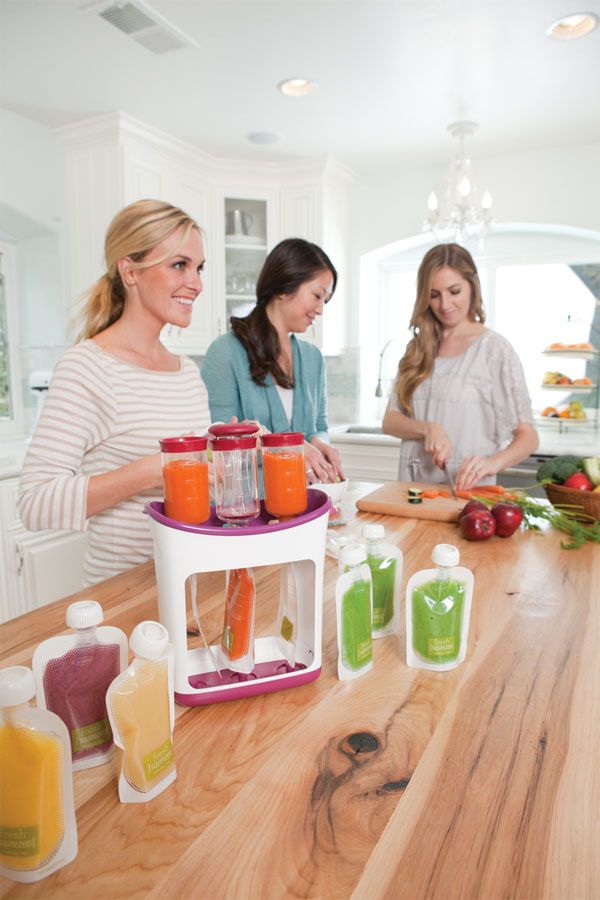 For example, children at high risk of developing allergic reactions to peanuts should be administered at 4-12 months of age under specialist supervision. No relationship was found between the timing of the introduction of allergenic complementary foods and the development of allergic or immunological diseases. However, this does not mean the need for early introduction of allergenic products to everyone, but it emphasizes that there is no need to postpone the introduction of allergenic products after 4 months for a longer period;
For example, children at high risk of developing allergic reactions to peanuts should be administered at 4-12 months of age under specialist supervision. No relationship was found between the timing of the introduction of allergenic complementary foods and the development of allergic or immunological diseases. However, this does not mean the need for early introduction of allergenic products to everyone, but it emphasizes that there is no need to postpone the introduction of allergenic products after 4 months for a longer period;  Sugary drinks are liked by babies in the first months, but if they are not given, but after 6 months, the children no longer like them very much. Sugar affects future eating behavior. Sugar is an important factor in the development of caries - it contributes to caries, as glucans can be formed, which increase the adhesion of bacteria to tooth enamel, disrupt the diffusion balance of acid and buffer systems, which ultimately contributes to damage to the enamel.
Sugary drinks are liked by babies in the first months, but if they are not given, but after 6 months, the children no longer like them very much. Sugar affects future eating behavior. Sugar is an important factor in the development of caries - it contributes to caries, as glucans can be formed, which increase the adhesion of bacteria to tooth enamel, disrupt the diffusion balance of acid and buffer systems, which ultimately contributes to damage to the enamel. 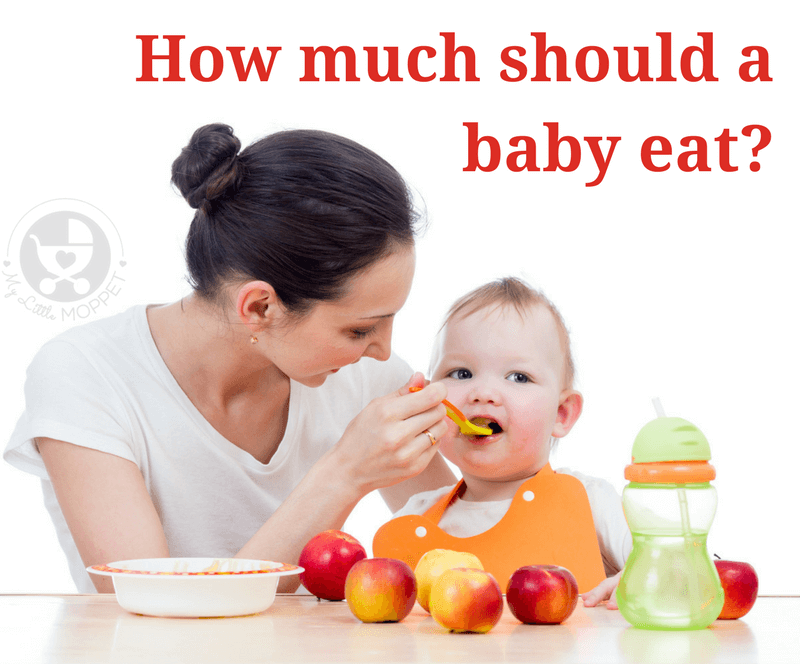 It is important that parents should be aware of the risk of irreversible harmful consequences (mental disability, death of the child) that may develop if they do not follow the recommendations of specialists.
It is important that parents should be aware of the risk of irreversible harmful consequences (mental disability, death of the child) that may develop if they do not follow the recommendations of specialists.
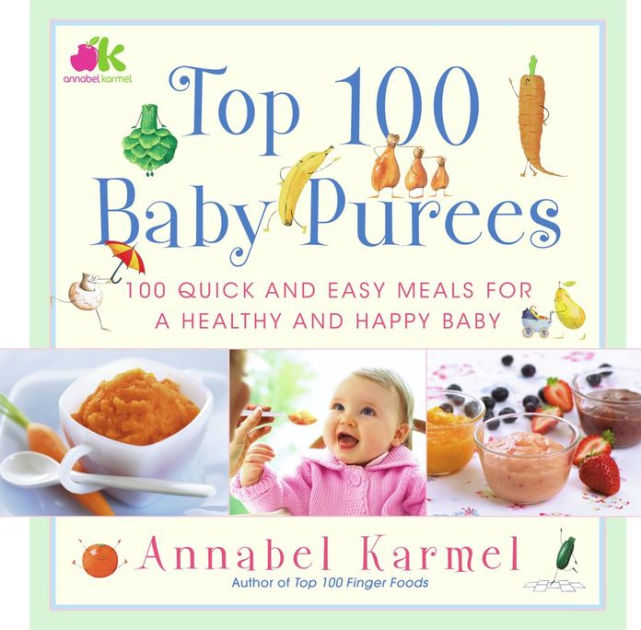 Gradually bring the baby's first complementary foods to the age norm 80-200 g
Gradually bring the baby's first complementary foods to the age norm 80-200 g
If you are thinking about introducing complementary foods, then your child should already have certain signs of readiness for this:

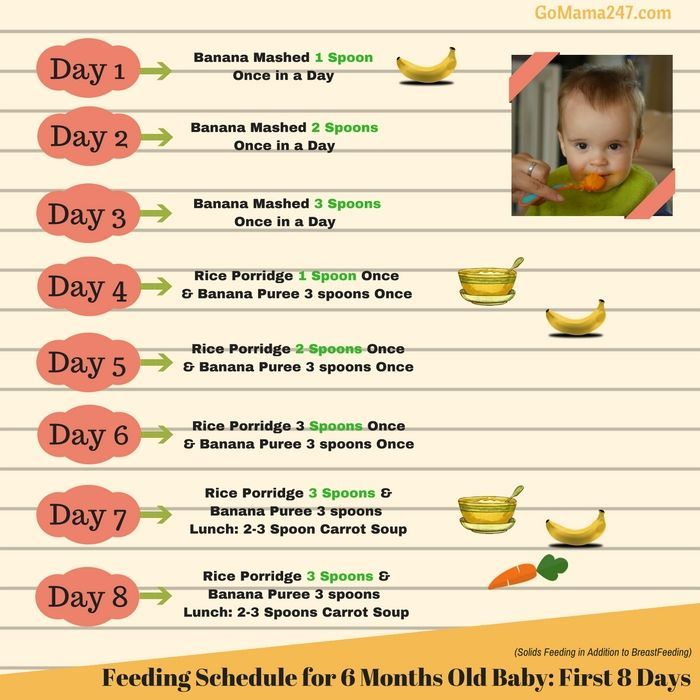 It is better to start with vegetable puree. Kids are smart and if he tries a sweeter fruit puree, he can refuse vegetable puree for quite some time and you may have difficulty introducing this very healthy dish.
It is better to start with vegetable puree. Kids are smart and if he tries a sweeter fruit puree, he can refuse vegetable puree for quite some time and you may have difficulty introducing this very healthy dish.  In the inflorescences of cabbage there is a lot of magnesium, sodium, potassium, phosphorus, calcium, iron. It contains twice as much iron as green peas, peppers and lettuce. Cauliflower protein is easily digestible and its content is quite high. Cauliflower protein contains essential vitamin U (methionine). It is one of the essential amino acids that cannot be synthesized by the human body. Other essential amino acids are also present in a small amount: arginine, tryptophan.
In the inflorescences of cabbage there is a lot of magnesium, sodium, potassium, phosphorus, calcium, iron. It contains twice as much iron as green peas, peppers and lettuce. Cauliflower protein is easily digestible and its content is quite high. Cauliflower protein contains essential vitamin U (methionine). It is one of the essential amino acids that cannot be synthesized by the human body. Other essential amino acids are also present in a small amount: arginine, tryptophan. 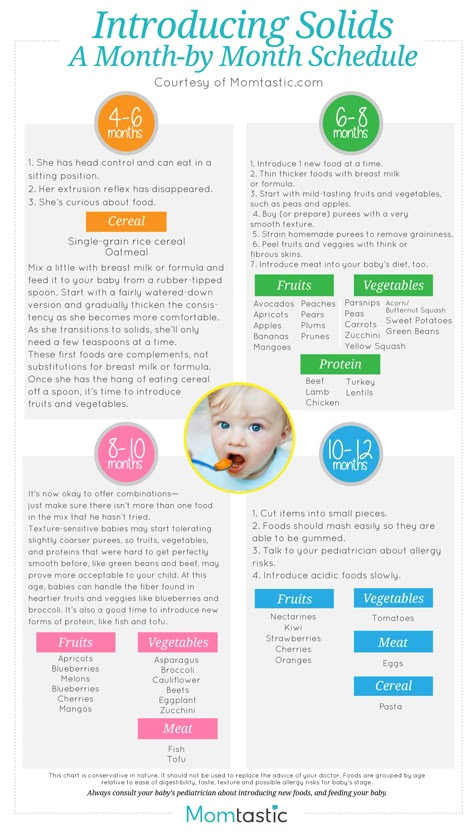 Pleasant soft taste and good digestibility of the product, unique composition have a beneficial effect on the health of both adults and children. Eat unopened cabbage inflorescences. This is also a low-allergenic vegetable, rich in protein, fiber, vitamins, calcium, iron, trace elements and even phytoncides. The content of calcium and magnesium is sufficient to balance the functioning of the nervous system, ensure the normal regulation of the child's sleep and wake cycle, and good stress resistance. A child with such nutrition becomes calmer, less excited and naughty.
Pleasant soft taste and good digestibility of the product, unique composition have a beneficial effect on the health of both adults and children. Eat unopened cabbage inflorescences. This is also a low-allergenic vegetable, rich in protein, fiber, vitamins, calcium, iron, trace elements and even phytoncides. The content of calcium and magnesium is sufficient to balance the functioning of the nervous system, ensure the normal regulation of the child's sleep and wake cycle, and good stress resistance. A child with such nutrition becomes calmer, less excited and naughty.  By the content of carotene, pumpkin exceeds carrots by 5 times.
By the content of carotene, pumpkin exceeds carrots by 5 times.  A serving of vegetable puree per day for an 8-month-old baby is approximately 80 grams. In a year, you can increase up to 150 grams. The next product can be administered no earlier than 4-5 days later. If a child has skin rashes, his stool has changed, then you need to remove the product from the diet and consult a pediatrician.
A serving of vegetable puree per day for an 8-month-old baby is approximately 80 grams. In a year, you can increase up to 150 grams. The next product can be administered no earlier than 4-5 days later. If a child has skin rashes, his stool has changed, then you need to remove the product from the diet and consult a pediatrician.  Prune puree is somewhat separate, it has a good effect on the baby's digestion, especially with a tendency to constipation, and, of course, also contains many useful substances.
Prune puree is somewhat separate, it has a good effect on the baby's digestion, especially with a tendency to constipation, and, of course, also contains many useful substances. 
 This is a hearty and nutritious dish with a good content of carbohydrates and proteins, potassium and magnesium, calcium and phosphorus, beneficial amino acids and vitamins. It replenishes energy costs, energizes and gives strength. Rice is not recommended for overweight children and those who suffer from severe constipation.
This is a hearty and nutritious dish with a good content of carbohydrates and proteins, potassium and magnesium, calcium and phosphorus, beneficial amino acids and vitamins. It replenishes energy costs, energizes and gives strength. Rice is not recommended for overweight children and those who suffer from severe constipation. 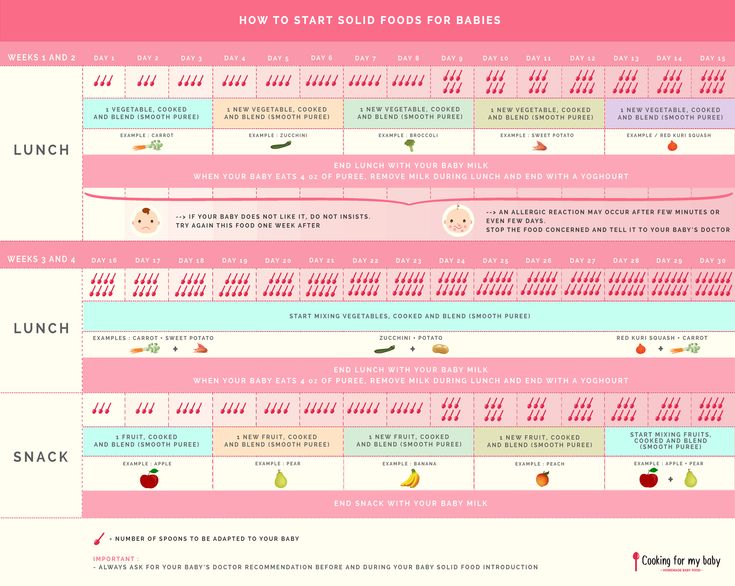
 In other words, a thicker porridge is administered no earlier than 7-10 days from the beginning of the introduction of porridge. The complete introduction of 10% porridge to the baby is also carried out in 7-10 days. The third week falls on the complete addiction of the child to a new dish. Only after that you can introduce a new cereal (in the form of 10% porridge) or the next complementary foods.
In other words, a thicker porridge is administered no earlier than 7-10 days from the beginning of the introduction of porridge. The complete introduction of 10% porridge to the baby is also carried out in 7-10 days. The third week falls on the complete addiction of the child to a new dish. Only after that you can introduce a new cereal (in the form of 10% porridge) or the next complementary foods.
 )
)
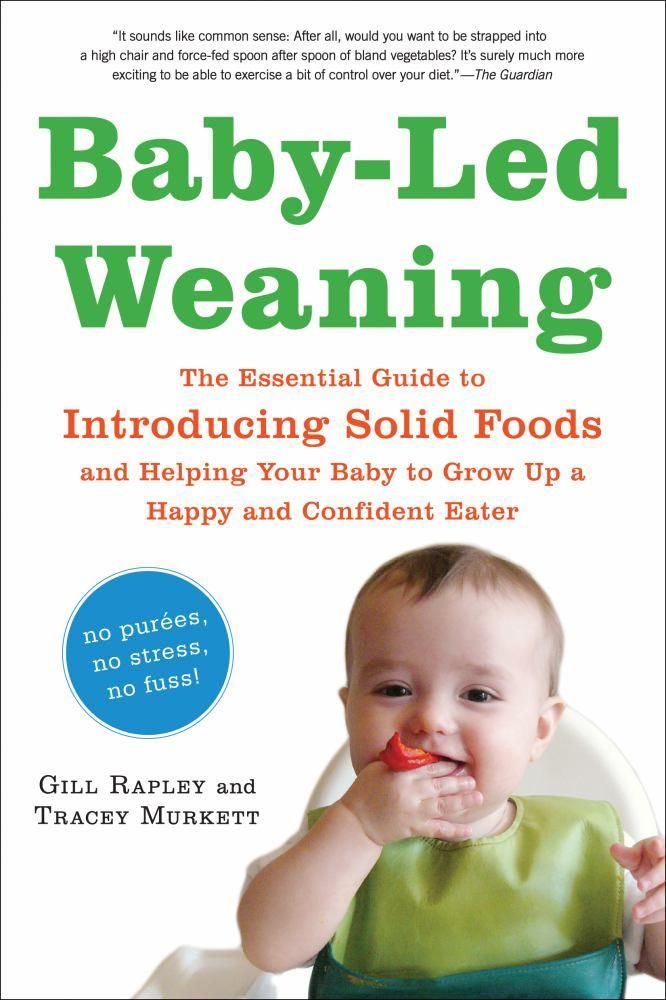 Since your task is to raise a healthy and intelligent child, meat complementary foods must be introduced without fail and in a timely manner.
Since your task is to raise a healthy and intelligent child, meat complementary foods must be introduced without fail and in a timely manner.  if your baby has been eating vegetables and cereals since 4 months, meat can be introduced at 6 months. From 7 months it can be administered if the child is not gaining weight. From 8 months to children who started complementary foods at 6 months.
if your baby has been eating vegetables and cereals since 4 months, meat can be introduced at 6 months. From 7 months it can be administered if the child is not gaining weight. From 8 months to children who started complementary foods at 6 months.  They are recommended to give only after 3 years;
They are recommended to give only after 3 years;

 It is desirable to feed the baby at the table with other family members, he must see how his parents eat with pleasure, he learns from them. The amount of food offered should be based on the principles of actively encouraging the baby to eat, it is necessary to continue to gradually change the consistency and increase the variety of complementary foods, adhering to the recommended frequency of introducing complementary foods.
It is desirable to feed the baby at the table with other family members, he must see how his parents eat with pleasure, he learns from them. The amount of food offered should be based on the principles of actively encouraging the baby to eat, it is necessary to continue to gradually change the consistency and increase the variety of complementary foods, adhering to the recommended frequency of introducing complementary foods.
At this age, the child usually gets complementary foods 3 times a day . His diet depends on the age of the start of complementary foods. If the baby began to give new food at 4-5 months, the list of allowed foods will be much wider than if this happened at 6-7 months. Therefore, all this is very individual, there are no absolutely rigid frameworks and recommendations. On the Internet you will find a lot of different advice on baby food, if you are not sure about something, it is better to consult your pediatrician.
From vegetables the baby can be given what he ate before, mixing them: pumpkin, zucchini, cauliflower, broccoli, carrots and others, adding 1 tsp.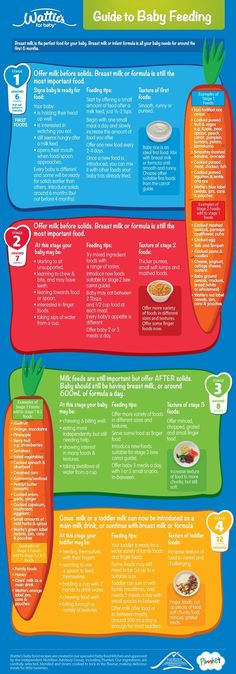 vegetable oil . If the baby does not have skin reactions, then you can give beets . It is also possible to give two-, three-component vegetable purees and soups , but only on condition that he is already familiar with these products and he has not had a reaction to them.
vegetable oil . If the baby does not have skin reactions, then you can give beets . It is also possible to give two-, three-component vegetable purees and soups , but only on condition that he is already familiar with these products and he has not had a reaction to them.
If you have introduced complementary foods, then you need to remember that water is an important part of baby food. You can use purified water or special water for children .
In addition, at 9 months you can give special baby wheat cookies , which the baby will be happy to eat on his own as an adult, white wheat bread, this improves hand motility, improves eating skills, but at the same time he must be supervised.
At this age, you can start giving fish puree from low-fat varieties: river perch, pollock, hake, haddock, zander, saithe - start with ½ teaspoon, bringing up to 40-50 g , watching the reaction of the child , give at lunchtime instead of mashed meat, 1-2 times a week. But a number of pediatricians do not advise giving it up to a year, it is a useful, but highly allergenic product.
But a number of pediatricians do not advise giving it up to a year, it is a useful, but highly allergenic product.
Baby menu at 10 months
B 10 months usually 2 times a day the child receives mother's breast or special milk formulas . Various porridges : buckwheat, rice, corn, oatmeal, wheat, semolina porridge . 5-10 g of butter should be added to cereals . At this age, it is already possible to make complex cereals from 2-3 cereals with which the child is familiar, add various fruits, vegetables: apple, banana, pear, plum and prunes, apricot and dried apricots, broccoli, carrots, berries , provided that the child is not allergic to them, or use ready-made cereals with fruit.
From vegetables the baby can be given what he ate earlier, mixing them: pumpkin, zucchini, cauliflower, broccoli, carrots, beets and others, adding 1 tsp. vegetable oil . It is also already possible to give two-, three-component vegetable purees and soups, but only on condition that he is already familiar with these products and he did not have a reaction to them.
vegetable oil . It is also already possible to give two-, three-component vegetable purees and soups, but only on condition that he is already familiar with these products and he did not have a reaction to them.
At this age, the baby already usually eats about 40-50 g of baby meat puree from chicken, turkey, rabbit , with good tolerance to cow's milk proteins from veal or beef. If he has been eating meat for a month or more, you can start giving him two-component meat purees , such as chicken and turkey.
At this age, fish puree from low-fat varieties is usually started: river perch, pollock, hake, haddock, pike perch, pollock with ½ teaspoon, bringing to 40-50 g, monitoring the reaction of the child, it is better to give at lunch time instead of mashed meat, 1-2 times a week .
At 10 months, children's cottage cheese should be given 2 times a week. Start with 1/2 teaspoon if you have not given it before, the daily amount of cottage cheese at this age 40-50 g .
Start with 1/2 teaspoon if you have not given it before, the daily amount of cottage cheese at this age 40-50 g .
It is recommended to give special sour-milk baby formulas.
At this age, a child can receive 5-10 g of butter and 5 g (1 teaspoon) of vegetable oil, and 2-3 times a week½ - yolk .
Child's menu at 1 year old
The child is one year old. He has already grown up, he already has 6-10 teeth, with which he gnaws everything he sees, he is interested in chewing food, his digestive enzymes already work well and he has already become acquainted with various products: vegetable and fruit purees, various cereal cereals, meat and fish, sour-milk mixtures. In fact, he is already prepared for the transition to a more adult diet. In a year, changing the diet involves turning to new products and gradually changing the way they are prepared and the degree of grinding.
You need to eat 5 times a day with an interval 3.5-4 hours .
semi-liquid dishes should still remain the basis of nutrition, but not only mashed dishes, but also containing small pieces of food . Too dry food should not be given to the baby yet, as he may have difficulty swallowing.
In the year the child already tries to eat with his hands and he should be encouraged to do so. Finely chopped, soft foods can be given eg: small pieces of soft fruits, vegetables, cheese, well-cooked meats, pasta , etc. and foods that dissolve quickly, children's biscuits, children's crispbread - as food with the help of hands.
Must avoid products that can be inhaled and cause asphyxia - sausages and other hard meat products , nuts (especially peanuts), grapes, raisins, raw carrots, popcorn, round candies . Hold off on this for now.
Hold off on this for now.
In a year, part of the children are without mother's milk. But if your baby is still not weaned - do not rush, if possible, give him a breast before bed at night. You can also breastfeed between main meals. At this age, the child receives all the main vitamins and minerals from food, but he can get a number of biologically active components from breast milk.
Dairy products
Dairy products still occupy an important place in the child's diet, it is a source of calcium, B vitamins, protein, milk sugar and fat. It is better to use special baby milk (marked with a triple on the package), baby fermented milk products: kefir, yogurt in total 500-600 ml per day .
Cottage cheese
The child should be given cottage cheese. The daily dose of cottage cheese after 1 year can be increased up to 70 g per day . It can be given pureed or combined with fruit puree, pudding, casserole. This contributes to the development of chewing skills.
It can be given pureed or combined with fruit puree, pudding, casserole. This contributes to the development of chewing skills.
Butter
Butter can be added to cereals or smeared on wheat bread, cookies in a dose of up to 12 g per day.
Low fat sour cream and cream
After 1 year, you can give low-fat sour cream and cream in small quantities.
Vegetables
Every year a child must be given various vegetables , it is good to combine them with protein products, meat . The vegetable diet can now be diversified with green peas, tomatoes, turnips, beets, carrots, spinach in the form of mashed potatoes. Legumes are still better not to give.
Fruits and berries
After 1 year, you can gradually introduce the baby to new fruits and berries: strawberries, cherries, cherries, kiwi, currants, gooseberries, chokeberries, sea buckthorn, raspberries, blackberries, cranberries, blueberries, lingonberries and even citrus fruits .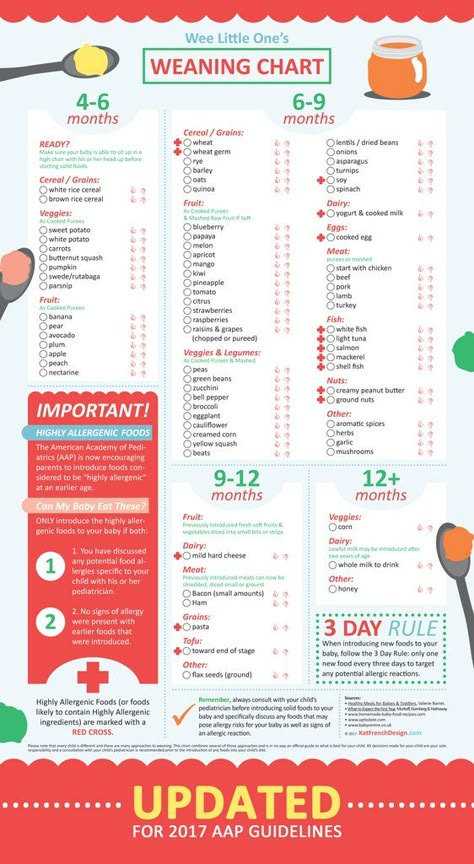 But do it gradually, watching the reaction of the child. Berries with a dense peel (gooseberries) are best mashed, while soft juicy fruits (peaches, strawberries, apricots, kiwi) can be offered to the baby in pieces.
But do it gradually, watching the reaction of the child. Berries with a dense peel (gooseberries) are best mashed, while soft juicy fruits (peaches, strawberries, apricots, kiwi) can be offered to the baby in pieces.
Daily dose of fruits - approx.
Meat products
Meat products can be given in the form of steam cutlets, meatballs, meatballs, meat soufflé and pudding in an amount up to 100 g daily - beef, veal, lean pork, rabbit, turkey, chicken.
Fish
Fish can be given once or twice a week for 30-40 g per meal as a substitute for meat dishes
Eggs
Chicken, quail eggs give boiled or in the form of omelettes in milk, you can try with vegetables.
Kashi
Porridge can be cooked from rice, oatmeal, buckwheat, corn, millet, semolina. At this age, they should still have a uniform consistency, so it will be easier for him to swallow. You can use ready-made industrial, children's instant cereals, for example, various multi-cereal cereals, in which fruits, crackers, cereals have already been added. Give 1 time per day.
At this age, they should still have a uniform consistency, so it will be easier for him to swallow. You can use ready-made industrial, children's instant cereals, for example, various multi-cereal cereals, in which fruits, crackers, cereals have already been added. Give 1 time per day.
Water
Be sure to give the child clean water to drink, better bottled water for children, as much as he wants . In addition to her baby can drink vegetable and fruit juices, dairy products, compotes, weak tea.
No need to give:
Do not give confectionery and sweets . From sweets at this age, you can sometimes give marmalade, dried fruits and cookies.
Do not give sausages and sausages , they are rarely prepared from high quality meats and are rich in various food additives
Calories and volume
0273 1200 ml .


